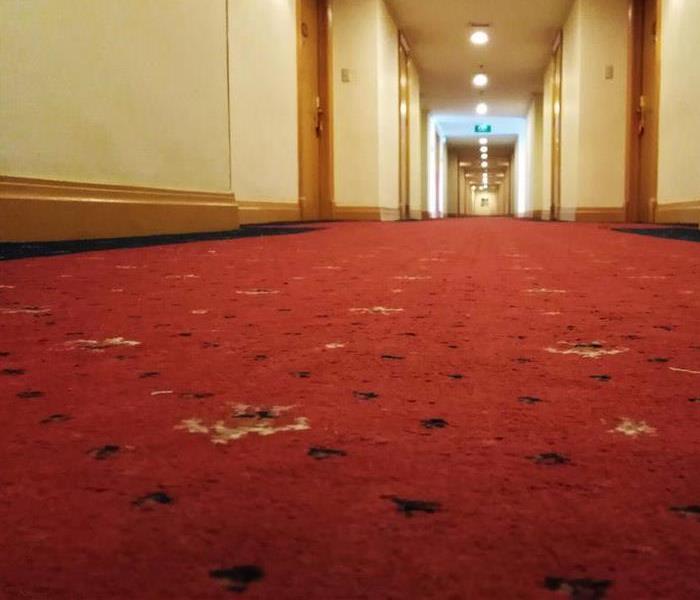4 Steps to Take When Finding Mold on Carpet
12/14/2020 (Permalink)
Moldy Carpet can be tough to remove. Let us help.
Recently we got a call from one of our customers complaining of a rotten egg smell in her living room, which she assumed was permeating as a result of a sewage leak. On inspection carried by our expert workers at SERVPRO of East Dayton/Beavercreek, we found that the smell was, in fact, due to the breeding of mold in the underlay of the room’s carpet.
An unfavorable musty smell and large discolored spots on the carpet is the most visible sign of mold growing in your house or property. To immediately get rid of it, it is essential to know the cause of the mold growth. Since mold spores can increase rapidly from one corner of your house to another, the sooner you combat it, the earlier you wipe out the mold from your home.
4 DIY Steps to Take When Finding Carpet Mold
- Ventilate the Area: When handling mold on carpet, make sure to keep your area ventilated without letting mold spores spread to other areas of your house. Use fans to blow unwanted air out of the house, or you can block off other parts by using plastic sheets or closing doors. If possible, dry out the carpet in direct sunlight to minimize the chances of mold returning.
- Scrub with a stiff bristle Brush: Scrub the moldy carpet with a brush and discard the scraped mold in a trash bag. Please do not use a non-HEPA vacuum as it could spread mold spores to other areas of your home.
- Use Antimicrobial Spray: Use an antimicrobial spray with a ‘mold prevention label’ to thoroughly spray on the moldy area as well as the floor beneath and let it sit for an hour.
- Dry the Carpet: Dry the carpet without using fans as this might spread out mold spores, resulting in more trouble; instead, turn on the heat up to let it dry naturally.
What to do after cleaning mold on carpet?
After you have cleaned mold on carpet, you can either dry it in direct sunlight, through ventilation, or using dehumidifiers, which help facilitate the drying process.
Once you have dried the affected area, your carpet is now mold-free! However, be alert and keep checking continuously for a month for any further signs of mold growth; so that you can declare your home free of mold.
How does mold grow on a carpet?
Your carpet can be the perfect place for unwanted organisms to thrive. House mold spores are tiny organisms that grow in humid and damp areas. Besides giving off a musty and foul smell to your surroundings, mold spores quickly multiply.
A typical mold invasion on the carpet is due to placing carpeting in the bathroom or basement: these are excessively damp areas. Since carpets are made up of cellulose fiber, it can retain dampness for a long time, providing a suitable living condition for mold germination and growth.
Mold growth can be due to the following reasons: high levels of humidity, poor maintenance, leaky pipes, or liquid spills.
However, you can attempt to get rid of mold on your own only if it hasn’t spread and is only on a small portion of the carpeting. It is best to reach out to mold remediation professionals when the mold damages are more severe.
How to prevent mold from growing on carpet flooring?
These are some of the best tips to prevent mold from growing on carpet:
- Inspect carpets Regularly
- Avoid installing carpet in humid areas
- Keep your house ventilated
- Use a dehumidifier
- Install synthetic carpet materials
Calling For Help
Mold on carpet is the worst thing to experience if you have patients, kids, and pets around. If you ever come across this unfortunate situation, please contact us to get rid of the unwanted mold spores.
SERVPRO of East Dayton/Beavercreek is available with mold damage professionals at your service 24/7. We strive to provide our customers with the highest quality and efficiency for Dayton mold removal services.



 24/7 Emergency Service
24/7 Emergency Service